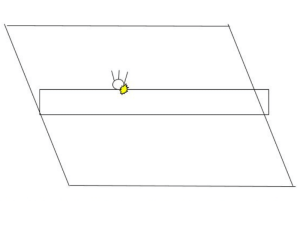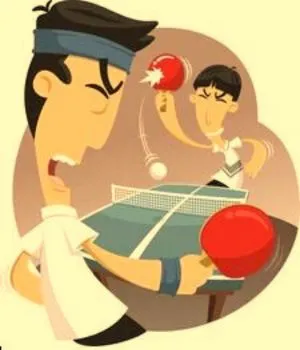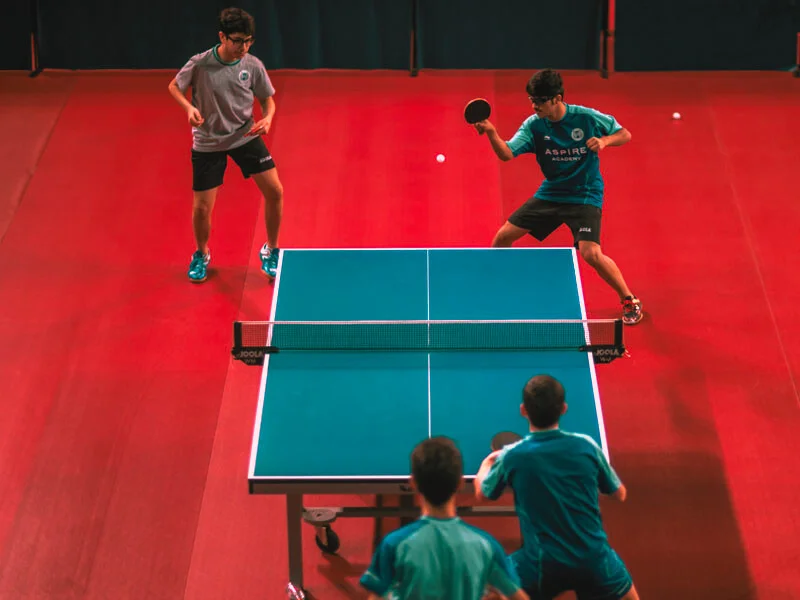Table tennis is usually played inside, but you can also play it outside. When you play outside, there are different options for where and how to play. If you’re interested in playing outdoors, you can find special Outdoor Tables made for that purpose.
In this guide, we’ll talk about how to play table tennis, both indoors and outdoors, including the rules you need to know. We’ll cover everything from the equipment you need to the rules of the game, making it easy to understand and enjoy. Whether you’re playing inside or outside, table tennis is a fun and exciting sport for everyone.
Equipment: Table tennis requires minimal equipment
- Table: The table is divided into two halves by a net. It measures 9 feet in length, 5 feet in width, and 2.5 feet in height.
- Net: The net divides the table and should be 6 feet in length and 6 inches in height.
- Racket: Players use a small, lightweight racket (also called a paddle or bat) to hit the ball.
- Ball: The ball is spherical, made of celluloid or plastic, with a diameter of 40mm and weighing 2.7g.
Scoring System:

Table tennis matches are typically played in a best-of format, with players or teams competing to win the majority of sets. A set is won by the first player or team to reach 11 points, with a two-point margin over the opponent. If the score reaches 10-10, the set continues until one player or team gains a two-point advantage. Matches are usually best of 5 or 7 sets.
What are rules for serving in Table Tennis?
Table Tennis Single Rules Serving:
- The server must toss the ball vertically at least six inches without spin before serving.
- The ball must bounce on the server’s side of the table first and then over the net to the opponent’s side.
- The server must hit the ball with the racket’s flat side, and the ball must touch the server’s court before touching the opponent’s court.
- The serve must alternate between the right and left sides of the table for each point.
- If the serve hits the net but still lands on the opponent’s side of the table, it’s called a “let,” and the serve is replayed without penalty.
Table Tennis Doubles Rules Serving:
In doubles matches, serving happens in a specific order to keep things fair. The serving and receiving players take turns every two points, and each player serves for a whole set of points.
- Starting the Serve: The serving team begins with the right-hand player serving to the right-hand opponent, then the left-hand player serves to the left-hand opponent. This helps make sure everyone gets a fair chance to serve and receive.
- Continuing the Serve: After each point, the serve switches to the other team’s player. So if the right-hand player served last time, now it’s the left-hand player’s turn, and vice versa.
- Switching Sides: Every few points, usually after 5 or 7 points, players switch sides of the table. This makes sure everyone gets to play from both sides evenly.
- Avoiding Mistakes: It’s important to follow the serving rules carefully to avoid mistakes. If a player breaks the rules, the other team gets the point.
By following these rules, doubles matches stay fair and fun for everyone involved!
Table Tennis Gameplay Rules:
Table tennis is played in singles (one player against another) or doubles (two players on each side). Players take turns serving and returning the ball until a point is won. The objective is to hit the ball over the net and onto the opponent’s side of the table in a way that makes it difficult for the opponent to return. Players use a combination of spins, speeds, and placements to outmaneuver their opponents.
Winning a Point:
A player wins a point if:
- The opponent fails to hit the ball over the net onto the opponent’s side of the table.
- The opponent hits the ball into the net or onto the opponent’s side of the table without it bouncing on their side.
- The opponent hits the ball out of bounds (off the table).
- The opponent commits a serving or receiving fault.
Common Fouls:
- Double Hit: Hitting the ball twice in succession.
- Ball Touch: Touching the table with any part of the body or clothing.
- Non-continuous Play: Deliberately delaying the game or refusing to play.
Service Faults:
A service is considered faulty if:
- The ball is served illegally (not in accordance with serving rules).
- The ball does not land on the opponent’s side of the table.
- The ball hits the net or net post during the serve.
- The server fails to toss the ball vertically at least six inches without spin.
Service Changes:
The server continues to serve until they lose a point, at which point the serve alternates to the opponent. This continues until the end of the game.
How many Lets are allowed in table tennis?
There is no limit to the number of lets allowed during a match. A let occurs when a served ball touches the net but still lands on the opponent’s side of the table. When a let occurs, the point is replayed without penalty, and the server serves again. Lets are common during matches and do not count as faults or errors.
However, if a let occurs during a serve, it must be replayed until a valid serve is made.
Who serves a game point in table tennis?
The game point is served by the player who has the lower score. For example, if the score is 10-8 in favor of Player A, Player B will serve the game point. This alternation of serving the game point continues until one player wins the game.
What is a topspin in table tennis?

Topspin is a technique used to impart forward rotation on the ball, causing it to spin rapid
ly in a forward direction as it travels through the air and bounces on the opponent’s side of the table. This spinning motion results in the ball dipping downward when it bounces, making it more challenging for the opponent to return with accuracy.
To execute a topspin shot, a player typically makes contact with the ball on its upper portion while swinging their racket from below to above the ball. This brushing action creates friction between the racket and the ball, generating the topspin effect.
Topspin is a fundamental technique in table tennis and is used to add speed, control, and unpredictability to shots. It is commonly employed during offensive play to put pressure on the opponent and set up opportunities for winning points.
Final Thoughts
With minimal equipment requirements and straightforward rules, it offers a thrilling experience for players of all ages and skill levels. Whether you’re honing your skills in a friendly match or competing in a tournament, understanding the basics of table tennis, including equipment, serving rules, and gameplay, is essential for a fair and exciting game. By following these guidelines and practicing regularly, players can Improve their abilities, Encourage fair play, have fun playing this exciting sport, and get ready to win with your paddle and partner on the table tennis court!
FAQs Related to Table Tennis Rules
What happens if the ball touches the edge of the table during play?
If the ball touches the edge of the table and lands inbounds on the opponent’s side, it is considered a valid point. However, if the ball touches the edge and lands out of bounds or fails to bounce on the opponent’s side, the point is awarded to the opponent.
Is there a time limit for serving in table tennis?
While there is no specific time limit for serving, players are expected to serve within a reasonable amount of time. Excessive delays in serving can result in penalties, such as warnings or loss of points, at the discretion of the referee or umpire.
What happens if a player touches the table with their body or clothing during play?
Touching the table with any part of the body or clothing while the ball is in play is considered a foul. If a player commits this infraction, the opponent is awarded the point.
Can players switch sides of the table during a match?
Yes, players are typically required to switch sides of the table after every game in a match. This ensures fairness by allowing both players to experience playing from different positions relative to lighting, airflow, and other environmental factors.
What constitutes a let in table tennis?
A let occurs when a served ball touches the net but still lands on the opponent’s side of the table. When a let occurs, the point is replayed without penalty, and the server serves again. However, if a let occurs during a serve, it must be replayed until a valid serve is made.


